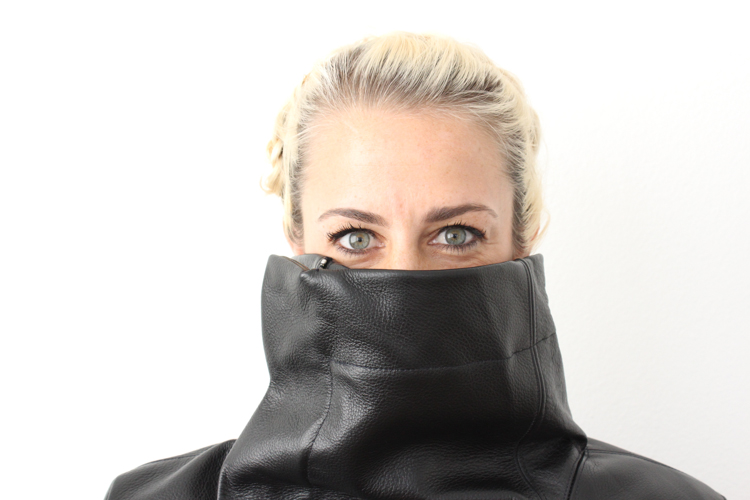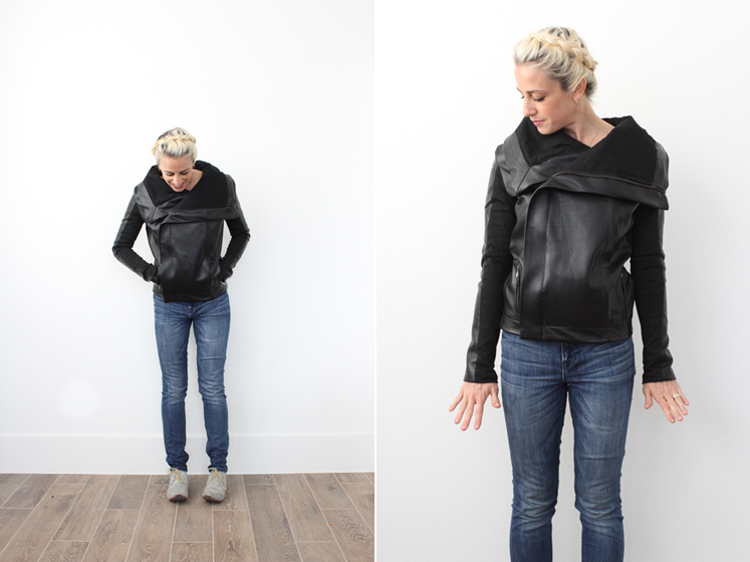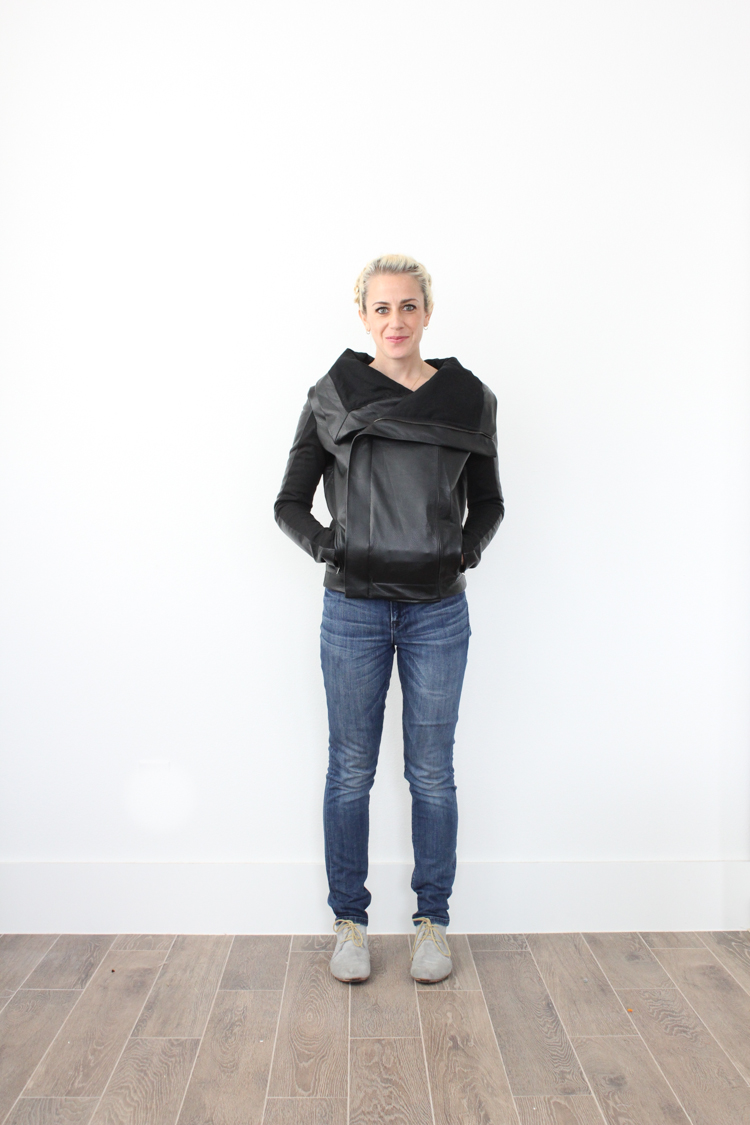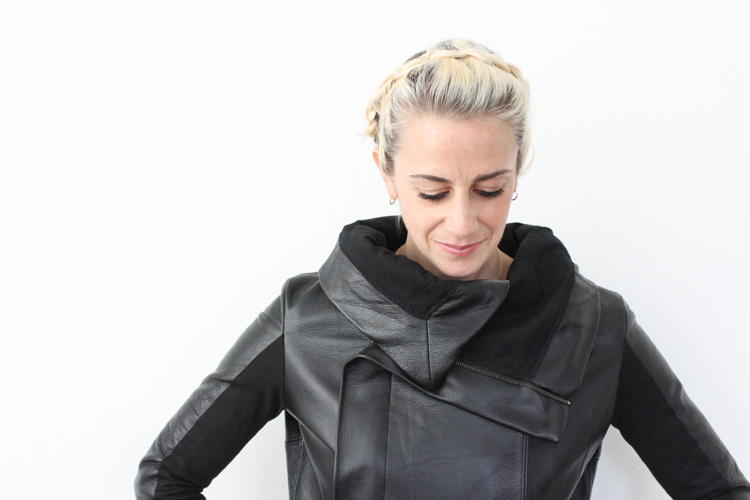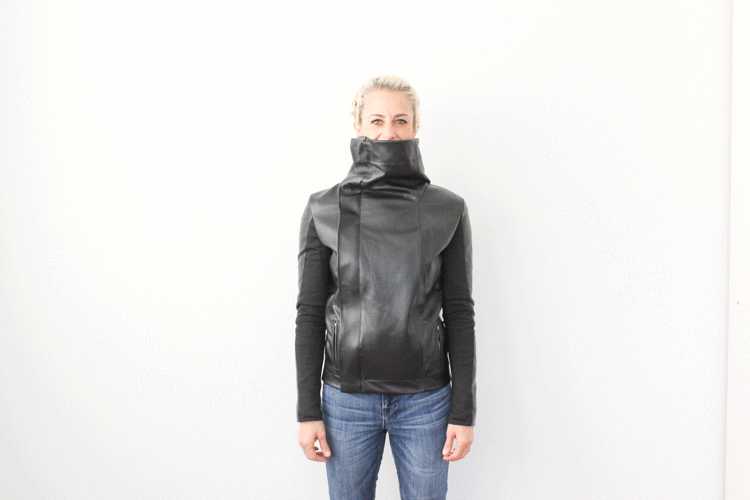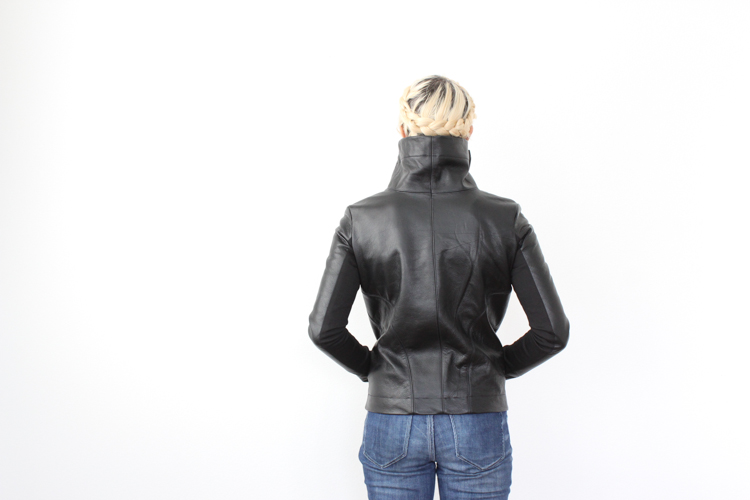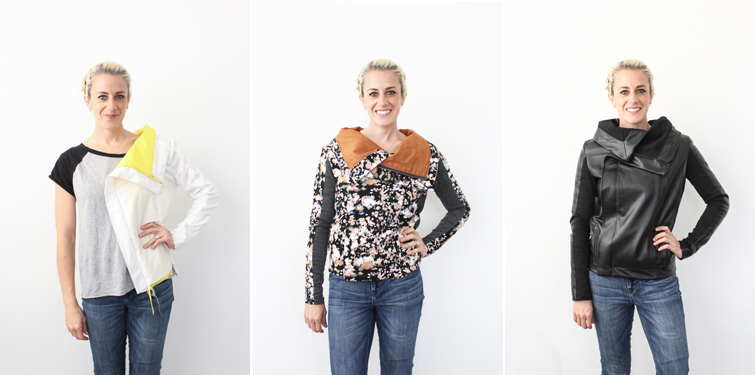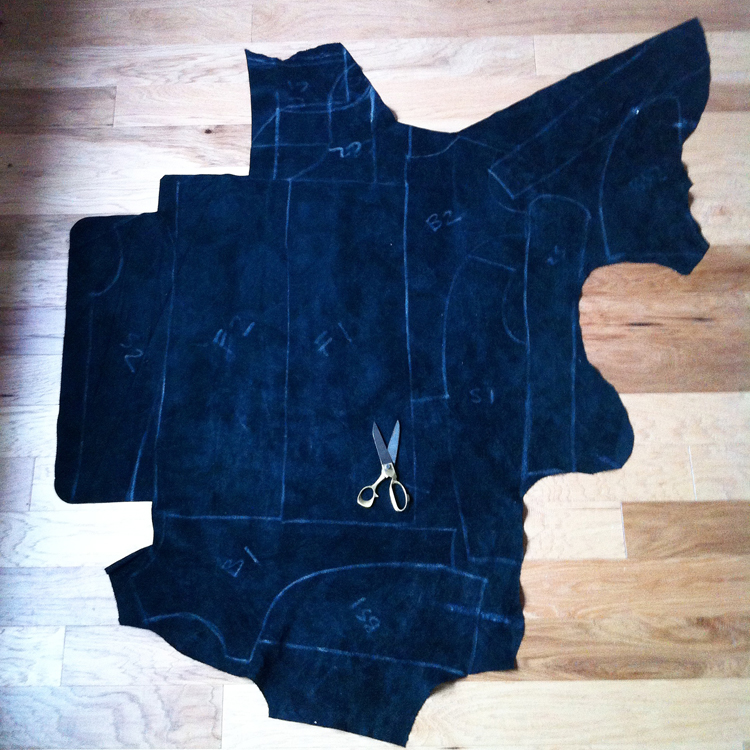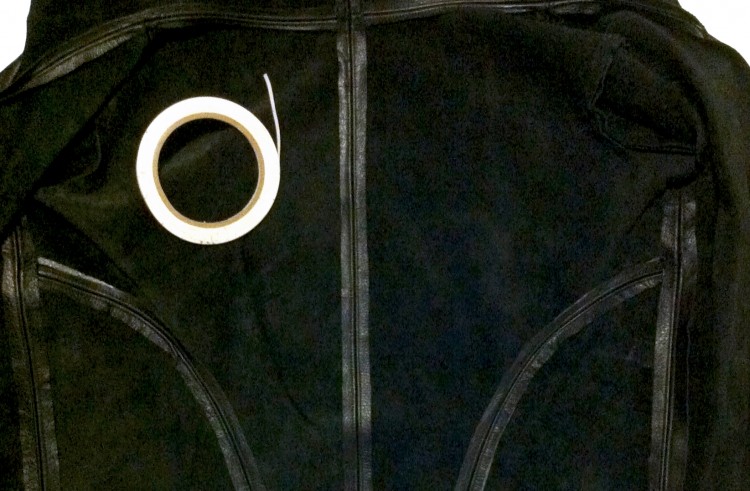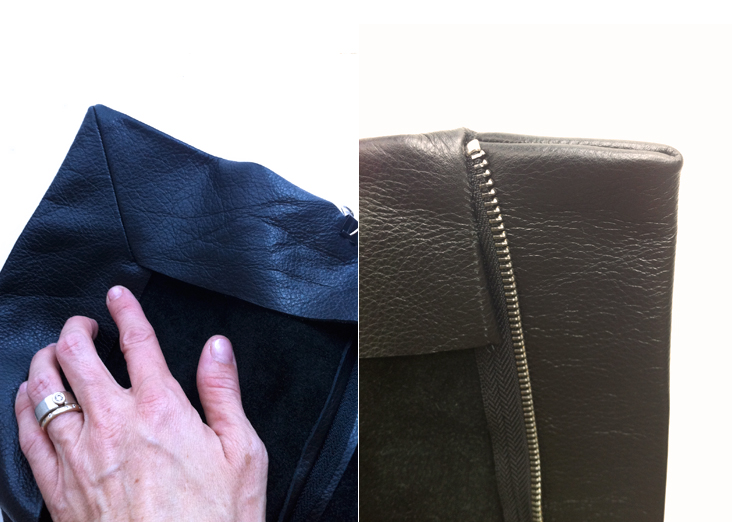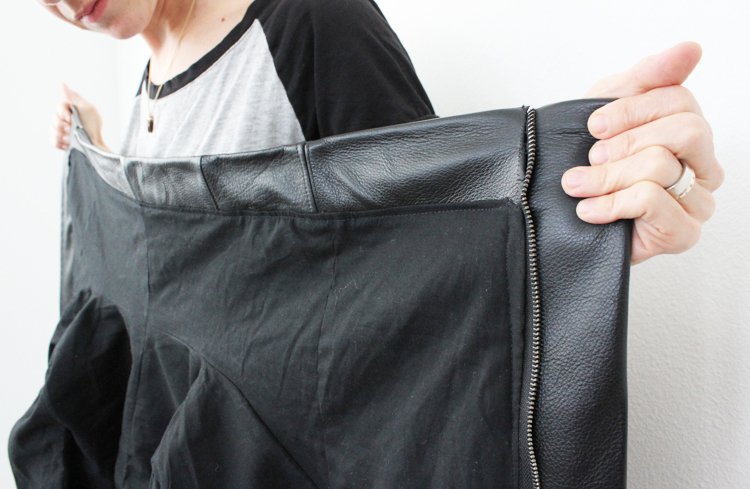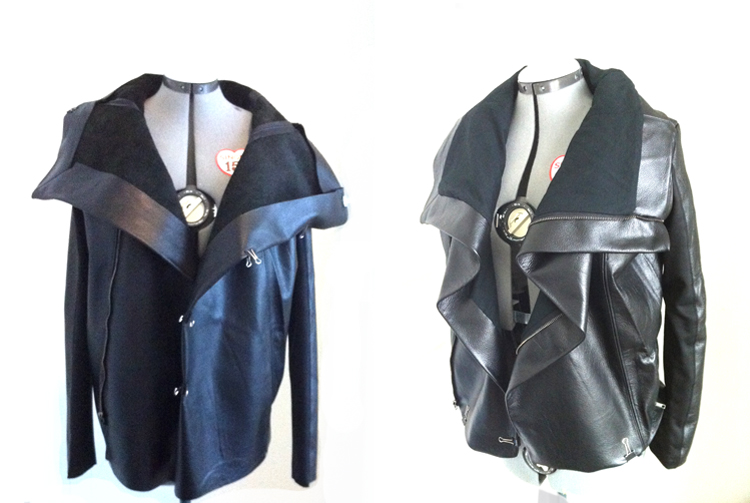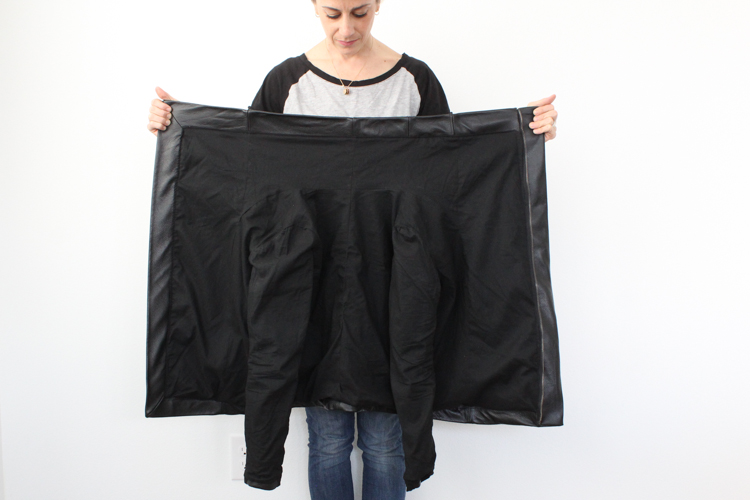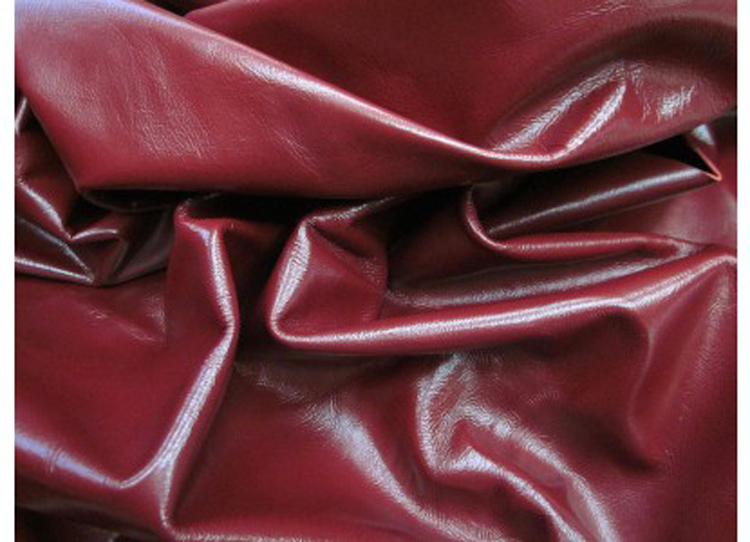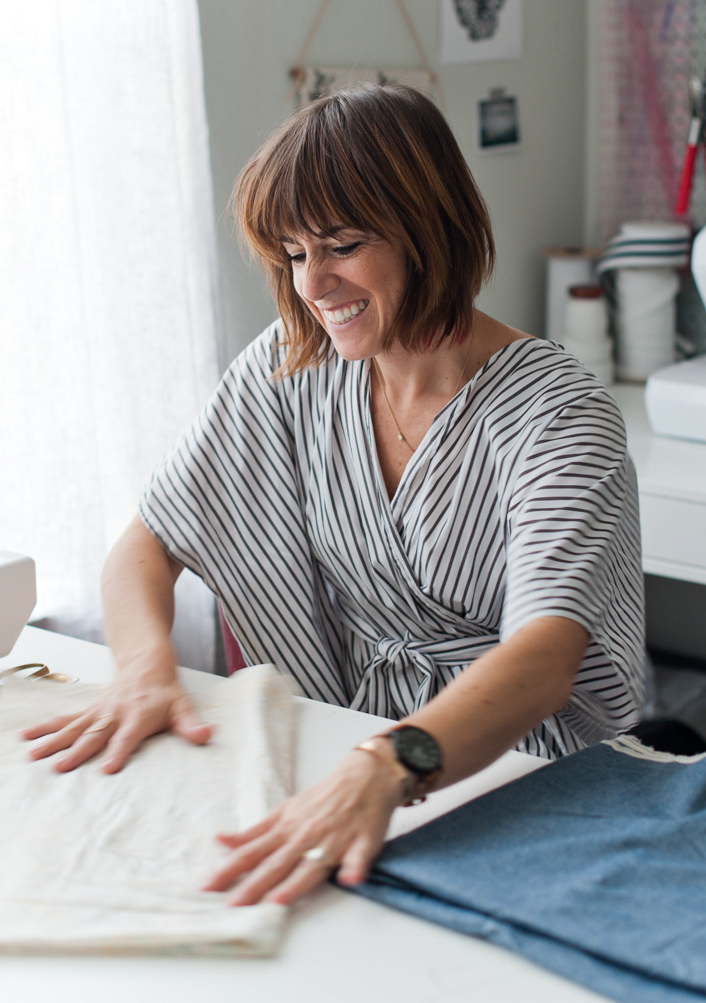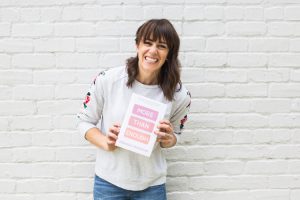So you know when something just sticks in your head? That’s what happened to me with this black leather jacket last year. I tried it on during my thirtieth birthday trip to Seattle, and haven’t stopped thinking about it since. When I posted about the jacket on Instagram (and how I wasn’t going to bring it home due to the $3300 price tag), most of the responses went something like, “Well, MAKE ONE!” That sounded like a good idea in theory, but I wasn’t sure I knew how to sew a leather jacket! Would it be like sewing costumes, clothes, or wedding dresses? I feel confident in my pattern making, fitting, and basic sewing techniques, and generally have a “make it work” attitude about projects, but in order to make this work I would need time, patience, and the perfect black leather.
Fast forward to October when my friend Merrick posted about the leather dress she made in partnership with Leather Hide Store. Not only is the dress darling, but it reminded me that I should be on the hunt for some buttery soft leather for the jacket of my dreams. I was thrilled when Leather Hide Store agreed to team up with me for this leather jacket project (dubbed #onelittleleatherjacket on my Instagram feed where I posted updates during the making). I had them send me a few different swatches to get a feel for the leathers, and one black piece was just perfect. Soft and a tiny bit stretchy. Thin enough to have a little drape, but heavy enough to be warm and feel durable as well. So, they sent me half a hide, and I went to work. I want to share a whole pile of fun photos of the finished jacket that my friend Dana shot for me, then I’ll give some insight into the making process and a couple things I learned. Also, Leather Hide Store is so generous and will be giving away a beautiful ruby red hide to one of my readers, so be sure to enter the giveaway at the bottom! 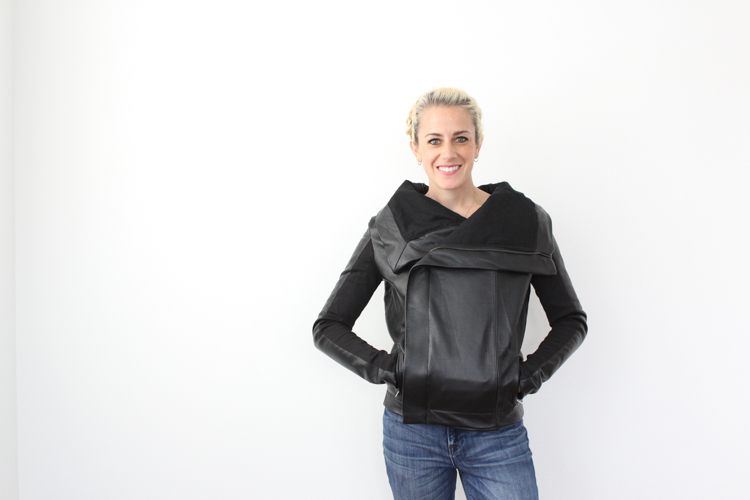
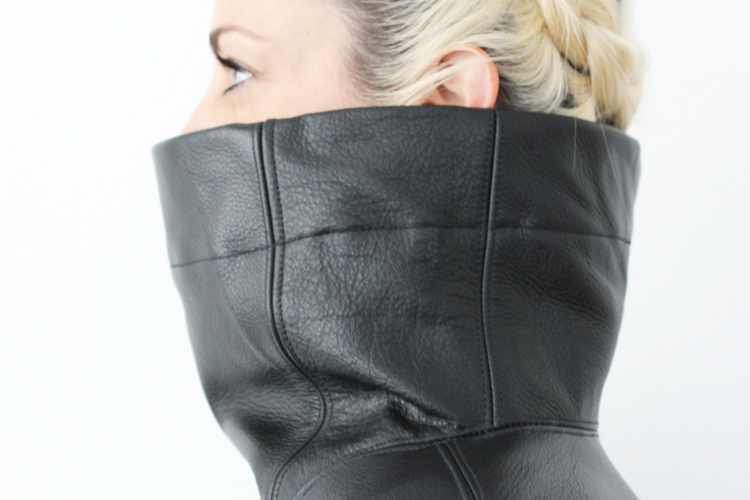
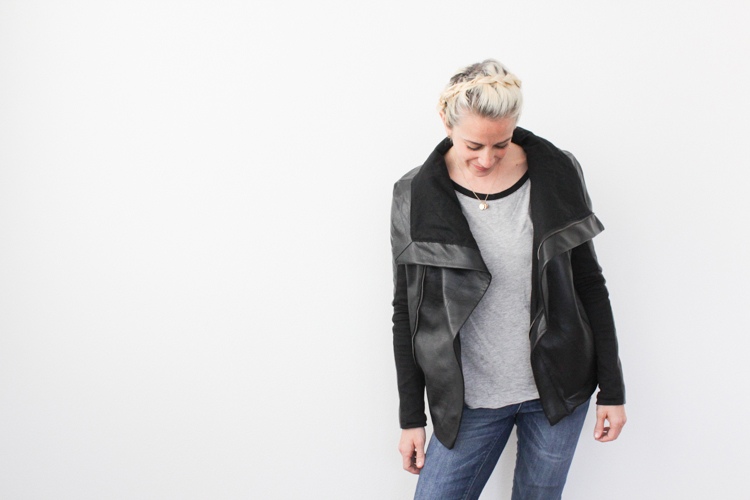
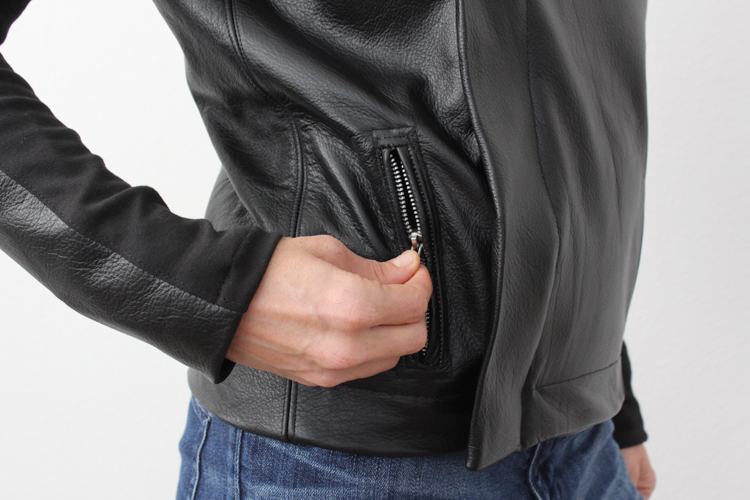
I draped the pattern for the jacket on my dress form and it was so fun to discover the symmetry of the asymmetrical design. Although the zipper is far off center, all of the front pieces of the jacket are the same, allowing the each stage of the unzipping to have a little different look as the wide, square collar folds down little by little. This jacket is obviously primarily inspired by the one I tried on last year, which was designed by Rick Owens. As I worked on this project I enjoyed doing a little research on him, and loved some of his ideas about design–like that on a good jacket the shoulders are narrow, and the sleeves tight and long to flatter the wearer. That’s where adding ponte knit to the sleeves comes into play, rather than having them solid leather. The ponte allows the sleeves to be tight fitting without being restrictive. The result is a jacket that looks less puffy and more sleek. I also had to laugh a little bit at the Rick Owens Quote “Working out is modern couture. No outfit is going to make you look or feel as good as having a fit body. Buy less clothing and go to the gym instead.” Well said. I’ll go to the gym so I can keep fitting into my tight leather sleeves!
Read on for more photos, pieces of the process, and the red hide giveaway!

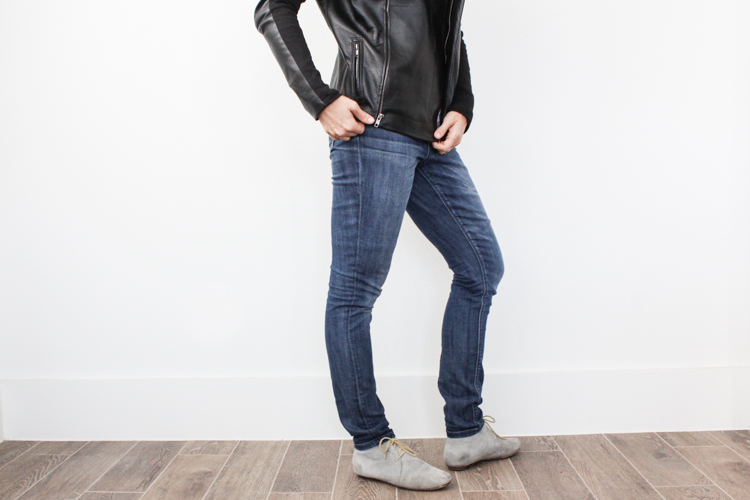
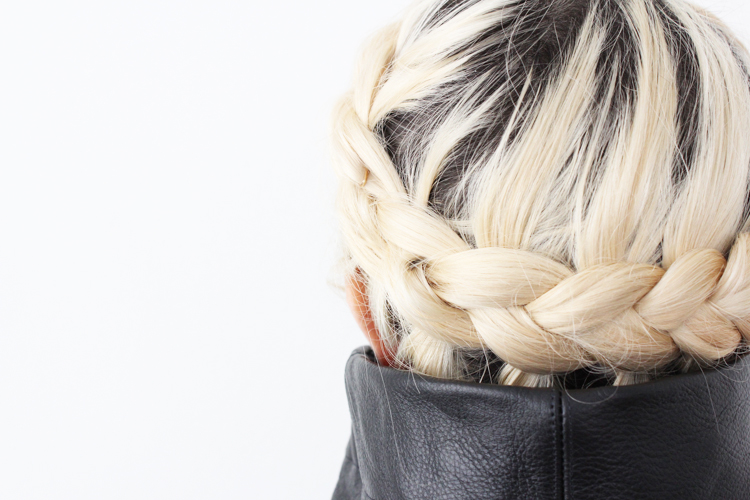

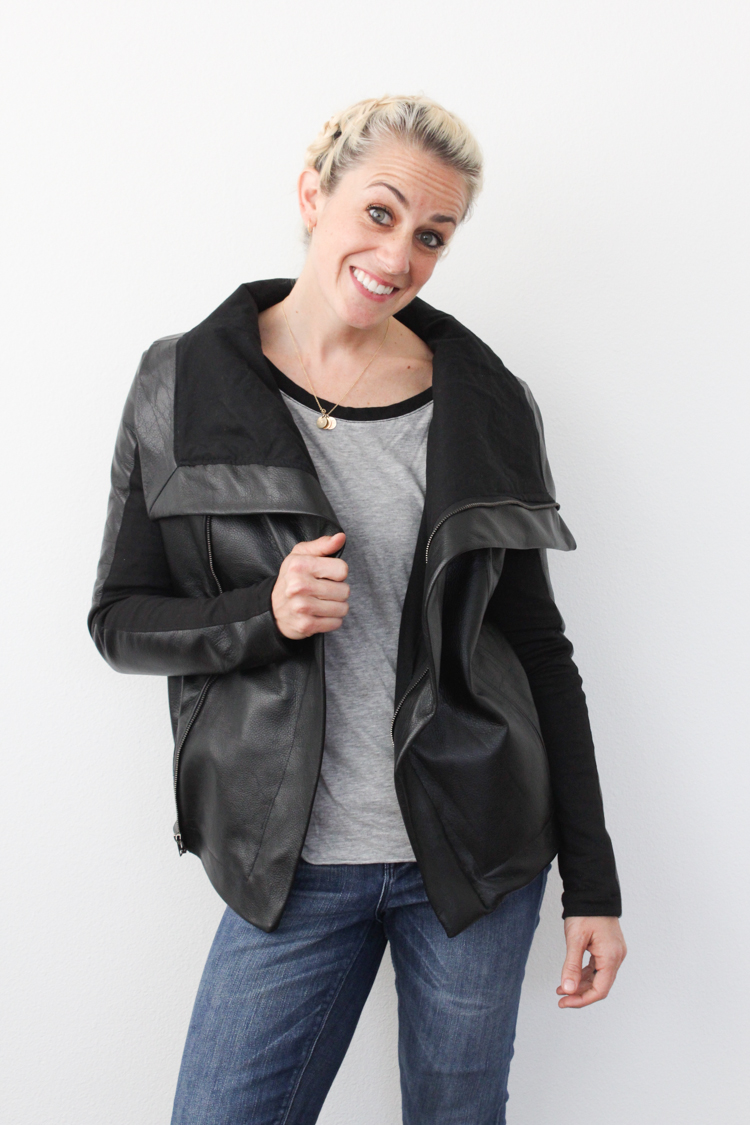
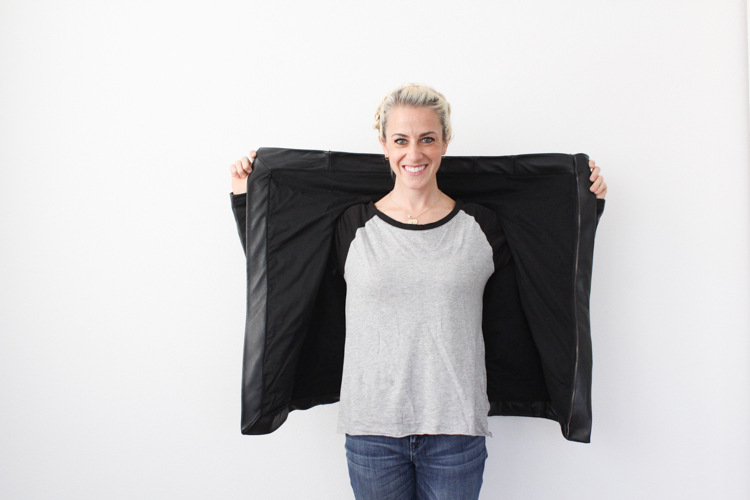
As soon as I received my leather hide from Leather Hide Store, I hung it on the dress form to get an idea of it’s drape. You can see it’s just beautiful. The high quality of the leather gave me the confidence I needed, and the determination to take care that this jacket ended up well made.
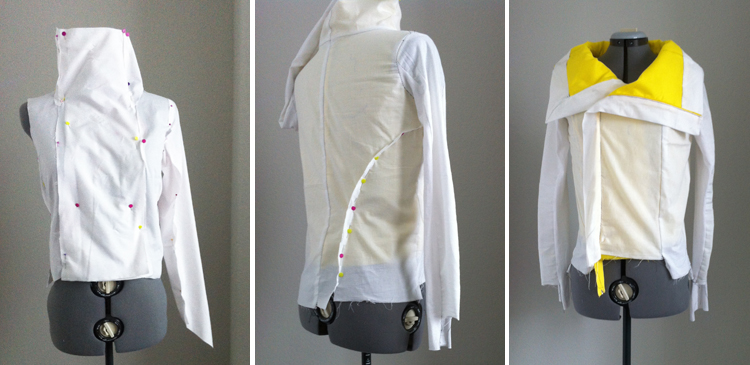
After the first design is draped, I remove all of the pieces from the dress form and trace them onto flat pattern paper. At that point I add seam allowances, true up the corners, and check my measurements. Then I use the flat pattern to cut a fit muslin. This If you look closely you can barely see some of the pattern markings that I make on my muslin. I sew the fit muslin together and use a marker to make notes right onto the fabric. Which direction the zipper goes, where the seams meet, and so forth. After making the fit muslin for this jacket, I took only half of it apart and used it as the pattern for the wearable muslin. The other half I left intact (just because it would have been more work to unpick it all!) and it’s fun to show the progression.
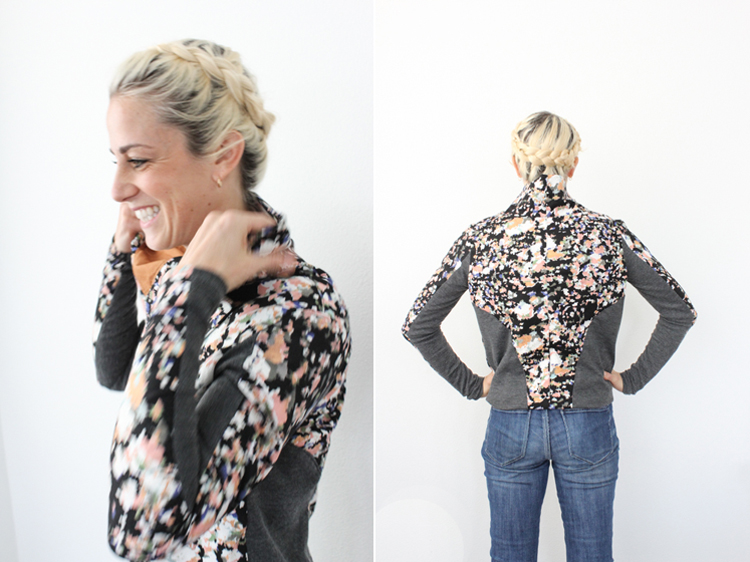
I should have thought to lay out the pattern pieces on the hide earlier, to make sure I would have enough. It was a seriously tight squeeze, but I got all 12 pieces on there with only having to piece together the one collar panel that I mentioned above. I didn’t take into account how irregular the hide shape would be, but it played in my favor because I had all sorts of little nooks to tuck pieces into.
After having sewn this pattern together twice already, the initial construction was a breeze. I used a walking foot, and a new package of leather needles, nice polyester thread, and a stitch length of 3-4 for most of the construction. Every seam on the leather got three rounds of stitches. First, the seam construction, then a row of topstitching along each side to help the seam allowances lay flat. This is where that leather tape came in really handy. I have used normal double-stick tape on other leather projects, but this is so much nicer and easier to use because it’s ultra-thin, so it disappears in the seam allowance. Also, it comes stuck to a white backing paper, so you can lay down a row and position it easily before pulling off the paper and revealing the other sticky side. I stuck down all my seams, then used it along all of the hem edges to keep them crisp when folded, since leather can’t be pressed for nice, neat seams.
The corners of this jacket were for sure the most tricky part. I needed them to be perfectly crisp and flat, even though the material is so thick. I took care and after sewing the seams cut out all of the extra bulk before adding the leather tape to stick the nice corners together. 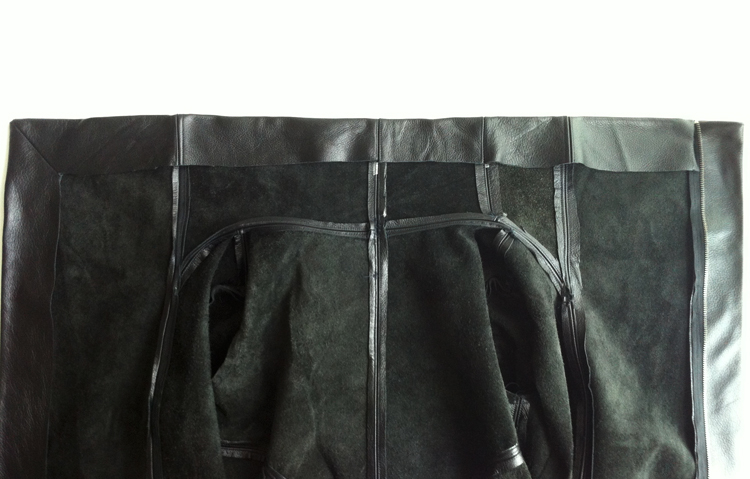
The scariest moment of the whole process was right as I was preparing to begin sewing the lining in place and I realized I needed to add pockets! I couldn’t sew a leather jacket without pockets! I had lazily omitted them from both of my muslins because I was more concerned about the fit. And then here I was needing to cut into my almost finished project with tricky double-welt zipper pockets made from leather! Before I began I scanned a great welt pocket tutorial to refresh my memory, and then I made a practice pocket.
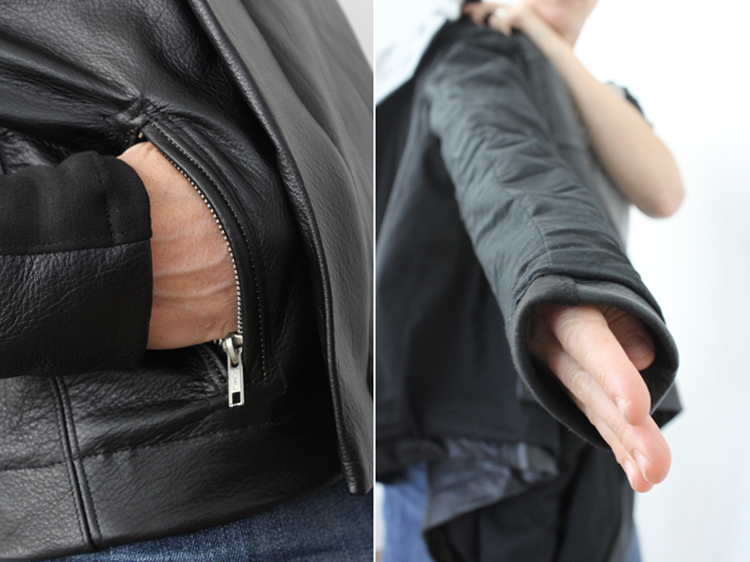
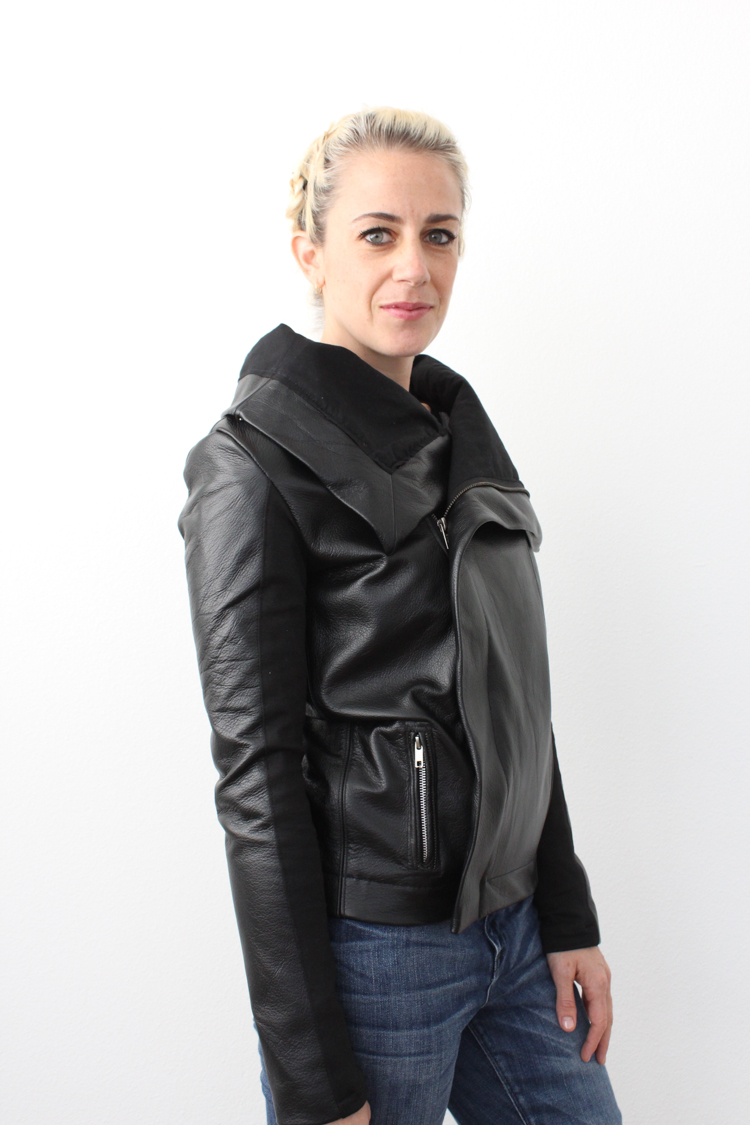
Now, who wants to win some leather? The Leather Hide Store has so generously offered to give away a beautiful and festive premium full grain Ruby Red hide! The hide is about 24 sq ft (more than enough for almost any project you have in mind!) It has a natural texture, medium finish, and very soft hand. The approximate weight is 2.6 ox/sq. ft and approximate thickness is 1.0-1.2 mm
If you’re not feeling up to making yourself a jacket here’s a few of my favorite leather tutorials from around the internet to give you an idea of all of the amazing projects you could use this for:
I got one of these no-sew diaper clutches as a baby shower gift and it’s still one of my favorite diaper bag essentials!
Everyone could use a darling fold-over leather clutch like this
These adorable leather baby mary janes
or these sweet moccasins
Add some leather to your favorite tee like this
a no-sew clutch like this would be sweet
I’ve been wanting to make this luggage set with leather and canvas
maybe you’d rather make some furniture and upholster it like this cool tufted bench
Looks like sky’s the limit! What will you do with the leather if you win? I can’t wait to hear. I had so much fun pushing my sewing boundaries with this project, I hope you enjoyed a peek into the process!

